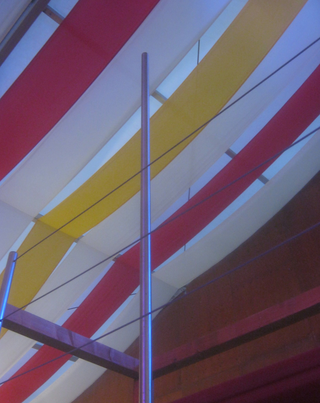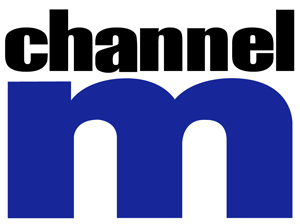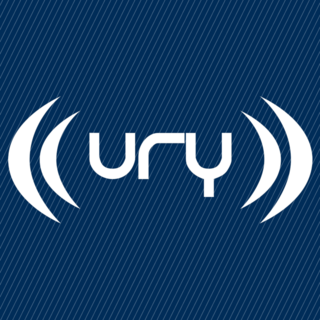
Medium wave (MW) is a part of the medium frequency (MF) radio band used mainly for AM radio broadcasting. The spectrum provides about 120 channels with more limited sound quality than FM stations on the FM broadcast band. During the daytime, reception is usually limited to more local stations, though this is dependent on the signal conditions and quality of radio receiver used. Improved signal propagation at night allows the reception of much longer distance signals. This can cause increased interference because on most channels multiple transmitters operate simultaneously worldwide. In addition, amplitude modulation (AM) is often more prone to interference by various electronic devices, especially power supplies and computers. Strong transmitters cover larger areas than on the FM broadcast band but require more energy and longer antennas. Digital modes are possible but have not reached momentum yet.

Low-power broadcasting is broadcasting by a broadcast station at a low transmitter power output to a smaller service area than "full power" stations within the same region. It is often distinguished from "micropower broadcasting" and broadcast translators. LPAM, LPFM and LPTV are in various levels of use across the world, varying widely based on the laws and their enforcement.

University Radio Nottingham is the university radio station of the University of Nottingham, England, where it is part of the Students' Union. During term-time it broadcasts locally on University Park Campus on 1350 AM and worldwide via its website. It is run by student volunteers from the University of Nottingham.

Cam FM is a student-run radio station at the University of Cambridge and Anglia Ruskin University. The station broadcasts online and has an FM frequency of 97.2 MHz. The station opened studios at Anglia Ruskin University and Fitzwilliam College and started broadcasting in 2012 from these locations after having spent its first 32 years located in Churchill College. Cam FM once held the world record for the longest team broadcast marathon, at 76 hours, and following the significant technical overhaul as a result of the two new studios in 2012, provided the first-ever broadcast media coverage of the Oxford vs Cambridge Women's Boat Race from Dorney Lake, as well as live outside broadcasts from Newmarket Races and the Varsity Ski Trip.

Channel M was a regional television station in England which broadcast to the Greater Manchester area between 2000 and 2012. The station, originally Manchester Student Television, was owned and operated by the GMG Regional Media division of Guardian Media Group.

Wave 105 was an Independent Regional Radio station based in Fareham, England, owned and operated by Bauer. It broadcast to South Hampshire, the Isle of Wight, West Sussex, Wiltshire, and Dorset.
Carrier current transmission, originally called wired wireless, employs guided low-power radio-frequency signals, which are transmitted along electrical conductors. The transmissions are picked up by receivers that are either connected to the conductors, or a short distance from them. Carrier current transmission is used to send audio and telemetry to selected locations, and also for low-power broadcasting that covers a small geographical area, such as a college campus. The most common form of carrier current uses longwave or medium wave AM radio signals that are sent through existing electrical wiring, although other conductors can be used, such as telephone lines.

TuneFM is the University of New England's (UNE) campus radio station, a high power open narrowcasting service operated by UNELife in Armidale, Australia. Founded in 1970, the station is Australia’s oldest university broadcaster, serving UNE’s students, staff, and the broader Armidale community.

FM broadcasting is a method of radio broadcasting that uses frequency modulation (FM) of the radio broadcast carrier wave. Invented in 1933 by American engineer Edwin Armstrong, wide-band FM is used worldwide to transmit high-fidelity sound over broadcast radio. FM broadcasting offers higher fidelity—more accurate reproduction of the original program sound—than other broadcasting techniques, such as AM broadcasting. It is also less susceptible to common forms of interference, having less static and popping sounds than are often heard on AM. Therefore, FM is used for most broadcasts of music and general audio. FM radio stations use the very high frequency range of radio frequencies.

University Radio York is a University Radio station covering the campuses of the University of York. It was the first legal independent radio station in the United Kingdom. Broadcasting from Vanbrugh College on the University's west campus, URY has won a number of awards from various organisations including the Student Radio Association of which it is a member.
A television transmitter is a transmitter that is used for terrestrial (over-the-air) television broadcasting. It is an electronic device that radiates radio waves that carry a video signal representing moving images, along with a synchronized audio channel, which is received by television receivers belonging to a public audience, which display the image on a screen. A television transmitter, together with the broadcast studio which originates the content, is called a television station. Television transmitters must be licensed by governments, and are restricted to a certain frequency channel and power level. They transmit on frequency channels in the VHF and UHF bands. Since radio waves of these frequencies travel by line of sight, they are limited by the horizon to reception distances of 40–60 miles depending on the height of transmitter station.
Bailrigg FM (formerly known as University Radio Bailrigg (URB) and Radio Bailrigg) is a student radio station at Lancaster University. It operates in a music format predominantly featuring pop, but also broadcasts news, drama, comedy, and entertainment. During evening and weekend hours, programming moves to specialist content where presenters are free (within reason) to play whatever they wish.
Radio enjoys a huge following in the United Kingdom. There are around 600 licensed radio stations in the country. For a more comprehensive list see List of radio stations in the United Kingdom.

Laker Radio is an internet radio station in Sault Ste. Marie, Michigan, United States. Broadcasting a college radio format, The 46th Parallel Radio is the campus radio station of the city's Lake Superior State University, and also provides mobile DJ services for on-campus and Sault Ste. Marie events. From 1993 to 2017, the station broadcast at 90.1 on the FM dial with the call sign WLSO, before becoming solely an internet radio station during the 2016–2017 school year.
Media in Aberdeen have long been published or broadcast. The main newspaper of the city and the surrounding area, the Press and Journal, has been made and printed in the city since 1748, making it Scotland's oldest newspaper.
University Radio Essex is a campus radio station at the University of Essex serving Wivenhoe Park in Colchester. It was one of the original university radio stations in the United Kingdom and with the other pioneering campus radio stations at York, Brunel, Loughborough, Sussex, Surrey the door was opened in the UK for campus radio.

Insanity Radio 103.2FM is a community radio station broadcasting to north Surrey, England from Royal Holloway, University of London on 103.2FM and online. It targets young people in the 15-25 age bracket, broadcasting a varied schedule of locally produced programming for up to 18 hours per day during term time, and is run by members of the local community.
Canterbury Student Radio (CSR FM) is a membership based student and community radio station based in Canterbury, England. It is currently funded by Kent Union based at the University of Kent. When actively broadcasting, the radio station airs a mixture of live and pre-recorded programming from Studio Red based in the Student Media Centre on the main campus 24 hours a day.

Media in Manchester has been an integral part of Manchester's culture and economy for many generations and has been described as the only other British city to rival to London in terms of television broadcasting. Today, Manchester is the second largest centre of the creative and digital industries in Europe.














